What's New
Displaying results 1541 - 1550 of 4899
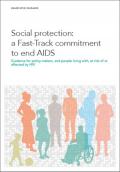
Resource | Guidelines,
Although much has been written on HIV-sensitive social protection, there is insufficient guidance on how to bring to scale what works in the context of different HIV epidemics and for different populations. This document seeks to fill this gap. It provides guidance to governments, people living with, at risk of or affected by HIV, policy-makers, and other stakeholders on how to intensify the integration of HIV with social protection and other programmes for ending poverty and inequality towards ending AIDS. It summarizes relevant evidence on social protection, including cash transfers, and on how social protection contributes to the AIDS response. It presents a brief account of the status of progress of Member States in meeting the HIV and social protection target of the 2016 Political Declaration on AIDS. It provides guidance for leveraging and scaling up social protection—in particular, social safety nets, financial incentives and social services—towards achieving the goal of ending AIDS. It does not focus on social security and labour market polices.

Resource | Publications,
Following the government’s ongoing ‘war on drugs’, law enforcement operations increased, leading to a rapid rise in the numbers of people held in detention and prison facilities. This, in turn, worsened already poor prison conditions in the Philippines. Official government data revealed a 511% congestion rate in Philippine jails and current trends show a surge in jail population attributable to ‘the increase in the number of drug-related cases’.

Resource | Publications,
Speaking on the UN International Day against Drug Abuse and Illicit Trafficking on June 26 in 2016, Cambodia’s Prime Minister Hun Sen emphasised the role of local communities and authorities in responding to drug-related issues, and strongly encouraged the promotion and strengthening of quality community-based treatment and rehabilitation services. His apparent support for a shift towards drug dependence treatment services that do not involve coercion and detention seemed to align with the government’s approval of Cambodia’s first five-year National Strategic Plan for Harm Reduction 2016-2020 (NSPHR) in 2016.
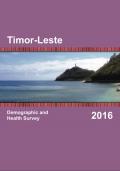
Resource | Publications,
The primary objective of the 2016 Timor-Leste: Demographic and Health Survey (TLHDS) project is to provide up-to-date estimates of basic demographic and health indicators. The TLDHS provides a comprehensive overview of population, maternal, and child health issues in Timor-Leste.
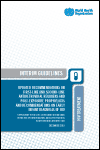
Resource | Guidelines,
In 2016, WHO published updated consolidated guidelines on the use of antiretroviral (ARV) drugs for treating and preventing HIV infection. These guidelines included recommendations on the choice of ARV drugs for first- and second-line antiretroviral therapy (ART). An efavirenz (EFV 600 mg)-based regimen was recommended as the preferred first-line regimen, with a dolutegravir (DTG)- or efavirenz (400 mg)-based regimen recommended as alternative options because of limited efficacy and safety data in pregnancy and when taken concomitantly with tuberculosis (TB) treatment. ART recommendations for children remained unchanged in 2016 compared with 2013 because of lack of approved DTG dosing for use in children.
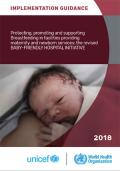
Resource | Guidelines,
This updated implementation guidance is intended for all those who set policy for, or offer care to, pregnant women, families and infants: governments; national managers of maternal and child health programmes in general, and of breastfeeding- and Baby-friendly Hospital Initiative (BFHI)-related programmes in particular; and health-facility managers at different levels (facility directors, medical directors, chiefs of maternity and neonatal wards). The document presents the first revision of the Ten Steps since 1989. The topic of each step is unchanged, but the wording of each one has been updated in line with the evidence-based guidelines and global public health policy.
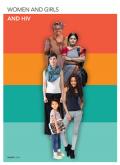
Resource | Infographics,
We know that through enabling women and girls to fulfill their rights to health, to education and to self-determination, change happens. Good health enables women and girls to thrive, to grow, to explore and to contribute to their communities. Access to quality health services and learning how to stay healthy enables women and girls to prevent illness, including HIV, and to exercise their sexual and reproductive health and rights.
We cannot stand by and allow the quality of life of women and girls to be held back and their hopes and dreams for the future to slip away. We must work collectively to close the gaps that continue to leave women and girls behind. Ending the AIDS epidemic by 2030 depends on advancing a social justice agenda that demands access to education, employment, health services, justice and political representation, free from discrimination and violence.

Resource | Publications,
UNAIDS has been at the leading edge of progress on gender in the UN. In just four years, UNAIDS has transformed its leadership at the country level from 27–48% women (2013–2017).

Resource | Publications,
Population aged 60 years and above for the year 2017 is represented with 9.0% of total population in which 4.3% and 4.7% are made up of male and female population respectively.
On the residential status, the share of the Brunei Citizens was around 76.8%, Permanent Residents 7.8% and temporary Resident 15.4%. As is the case of affluent countries with small populations, the foreign proportion of the population is rather high. The relatively high number of forign population is being contributed by the number of working immigrants.
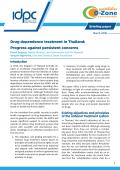
Resource | Fact Sheets,
In 2016, the Kingdom of Thailand formally decided to re-allocate responsibility for drug dependence treatment from the Ministry of Justice to the Ministry of Public Health by the end of 2018.
This paper offers a brief analysis of these two challenges in light of current policies and practices, along with recommendations for overcoming them to ensure the implementation of a drug treatment system that can result in improved health and human rights outcomes for people who use drugs and people dependent on drugs.





